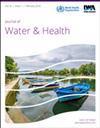农村和城市环境中饮用水源的大肠杆菌污染:对38项全国代表性家庭调查的分析(2014-2021年)
IF 2.4
4区 环境科学与生态学
Q3 ENVIRONMENTAL SCIENCES
引用次数: 0
摘要
全球尚未步入到2030年实现普遍获得安全管理用水的轨道,农村地区的可及性大大降低。可持续发展目标的这一具体目标和许多其他全球指标都依赖于对改善水源的分类,以便监测获取情况。我们的目的是调查饮用水水源的污染,比较城市和农村环境中改善和未改善的水源。我们使用了多指标聚类调查的数据,该调查对38个国家的家庭水源和一杯水中的大肠杆菌污染样本进行了测试。几乎在所有国家、环境和水源中,污染都很普遍,而且高得惊人,国家之间和国家内部存在严重的不平等。51.7%的家庭在水源处发现了水污染,70.8%的家庭在杯子里发现了水污染。一些经改善的水源(例如受保护的水井和雨水)与未经改善的水源一样可能受到污染。有些水源,如自来水,在农村地区比在城市地区更容易受到污染,而在其他地区则没有发现差异。监测水污染以及对水的收集、储存和来源分类进行进一步调查是必不可少的,必须扩大这项工作,以实现普遍获得安全管理的水。本文章由计算机程序翻译,如有差异,请以英文原文为准。
E. coli contamination of drinking water sources in rural and urban settings: an analysis of 38 nationally representative household surveys (2014–2021)
Abstract The world is not on track to achieve universal access to safely managed water by 2030, and access is substantially lower in rural areas. This Sustainable Development Goal target and many other global indicators rely on the classification of improved water sources for monitoring access. We aimed to investigate contamination in drinking water sources, comparing improved and unimproved sources in urban and rural settings. We used data from Multiple Indicator Cluster Surveys, which tested samples from the household water source and a glass of water for Escherichia coli contamination across 38 countries. Contamination was widespread and alarmingly high in almost all countries, settings, and water sources, with substantial inequalities between and within countries. Water contamination was found in 51.7% of households at the source and 70.8% in the glass of water. Some improved sources (e.g., protected wells and rainwater) were as likely to be contaminated as unimproved sources. Some sources, like piped water, were considerably more likely to be contaminated in rural than urban areas, while no difference was observed for others. Monitoring water contamination along with further investigation in water collection, storage, and source classification is essential and must be expanded to achieve universal access to safely managed water.
求助全文
通过发布文献求助,成功后即可免费获取论文全文。
去求助
来源期刊

Journal of water and health
环境科学-环境科学
CiteScore
3.60
自引率
8.70%
发文量
110
审稿时长
18-36 weeks
期刊介绍:
Journal of Water and Health is a peer-reviewed journal devoted to the dissemination of information on the health implications and control of waterborne microorganisms and chemical substances in the broadest sense for developing and developed countries worldwide. This is to include microbial toxins, chemical quality and the aesthetic qualities of water.
 求助内容:
求助内容: 应助结果提醒方式:
应助结果提醒方式:


